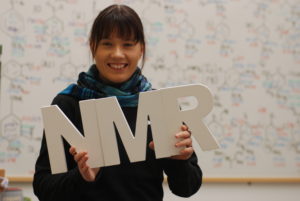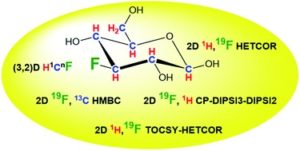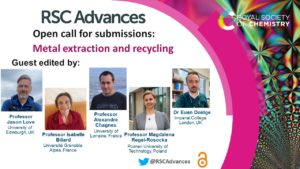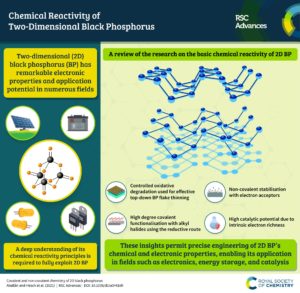We are very pleased to introduce Dr Nicholle Bell, the corresponding author of the RSC Advances article 19F-centred NMR analysis of mono-fluorinated compounds. This paper became one of the newest additions to our Popular Advances collection. The Popular Advances Collection is a selection of well received RSC Advances articles, handpicked by our reviewers and handling editors.
Nicholle told us more about the work that went into this article and what she hopes to achieve in the future. You can find out more about the authors and their article below. If you would like to explore more of our Popular Advances, please find the full online collection here.
Meet the Author:
Nicholle Bell is an environmental chemist whose research involves the design and application of state-of-the-art analytical methods for unravelling the composition of complex mixtures. She completed her PhD in 2015 where she designed 3D and 4D NMR experiments for identification of molecules within Earth’s most complex mixture: soil organic matter. In 2016, she was awarded a 3 year NERC Soil Security Fellowship at the University of Edinburgh to develop new NMR and FT-ICR-MS methods for examination of the organic matter within peat soils. In 2017, she was award the RSC Joseph Black Medal for “innovative developments in the teaching and practice of spectroscopy”. She is currently a NERC Independent Research Fellow combining molecular, microbial and enzymatic methods to examine the relationships between the drivers of carbon cycling in peatlands across the UK, Canada and Sweden.
- Could you briefly explain the focus of your article to the non-specialist (in one or two sentences only) and why it is of current interest?
19F-centred Nuclear Magnetic Resonance (NMR) is a spectroscopic methodology that allows efficient structure elucidation of fluorine-containing molecules in complex mixtures.
- How big an impact could your results potentially have?
The analysis of fluorinated molecules is required in many scientific fields. Incorporation of 19F into small organic molecules improves their biological properties making them an important target for the pharmaceutical and agrochemical industries. Organic chemists chose to tag their molecules with 19F to allow them to study reaction mechanisms and kinetics. A similar approach can be used to characterise unknown molecules in complex environmental mixtures. To support all these efforts, efficient analytical methodology for the characterisation of fluorinated molecules, either as pure species or in mixtures, is required and this is where our methodology can help.
- Could you explain the motivation behind this study?
I am an environmental chemist fascinated by the complexity of environmental mixtures. Part of my research portfolio is the development of methodologies that will enable structure elucidation of small molecules found in our soils and waters. We are surrounded by these mixtures and yet do not understand their composition and hence find it difficult to explain their properties and functions. In addition, many manmade fluorinated molecules have become part of our modern life with approximately 25% and 50% of pharmaceuticals and agrochemicals, respectively, containing fluorine. It is satisfying to realise that our methodology can be used in a number of research fields.
- In your opinion, what are the key design considerations for your study?
NMR is one of the most powerful analytical techniques for structure determination of molecules. It is an indirect method, which gathers and interprets a plethora of molecular parameters to arrive at the proposed structure, a process akin to putting together pieces of a puzzle. Our 19F-centred NMR approach utilises the substantial sensitivity of 19F and it’s far reaching couplings with 1H and 13C to obtain 1H, 13C and 19F chemical shifts, values of JHF, JHH, and JFC coupling constants and 13C induced 19F isotopic shifts. The obtained data constitute a rich source of information that enables structure elucidation of fluorinated structures. An important advantage of 19F over other nuclei is the lack of background signals due to the absence of fluorinated endogenous compounds, making it possible to apply our methodology to complex mixtures without the need to separate individual compounds.
- Which part of the work towards this paper proved to be most challenging?
Today’s NMR spectroscopy has at its disposal in impressive set of building blocks, which when put together produce, new, ever more sensitive and efficient NMR experiments. A lot of time is spent putting these bocks together and refining them in order to produce generally applicable, state of the art NMR experiments. This could be a challenge, but also great fun.
- What aspect of your work are you most excited about at the moment?
The potential of our approach to identify molecules found in environment. To understand their transformations and roles they play in our ecosystems, including their effects on human health or ability to enable carbon storage.
- What is the next step? What work is planned?
The focus now is on applying our methodology to study environmental samples. We are testing numerous existing fluorination methodologies to introduce fluorine into complex mixtures of natural organic matter. Once incorporated we are using fluorine as a molecular spy to report on its chemical environment to help aid structure determination of organic compounds.
19F-centred NMR analysis of mono-fluorinated compounds†
Alan J. R. Smith, Richard York, Dušan Uhrín and Nicholle G. A. Bell *
RSC Adv., 2022,12, 10062-10070 DOI: 10.1039/D1RA08046F
Submit to RSC Advances today! Check out our author guidelines for information on our article types or find out more about the advantages of publishing in a Royal Society of Chemistry journal.
Keep up to date with our latest Popular Advances, Reviews, Collections & more by following us on Twitter. You can also keep informed by signing up to our E-Alerts.

















